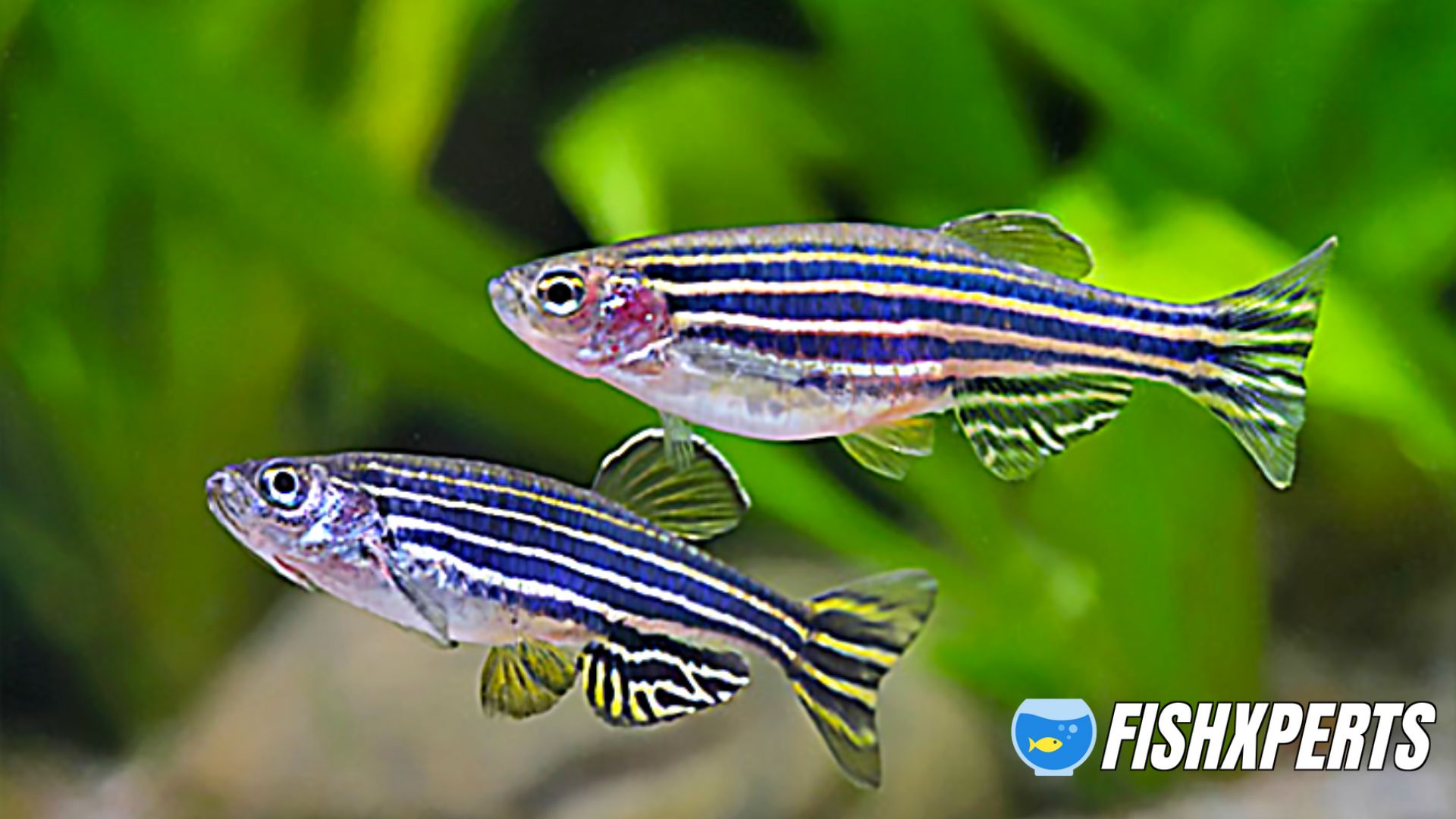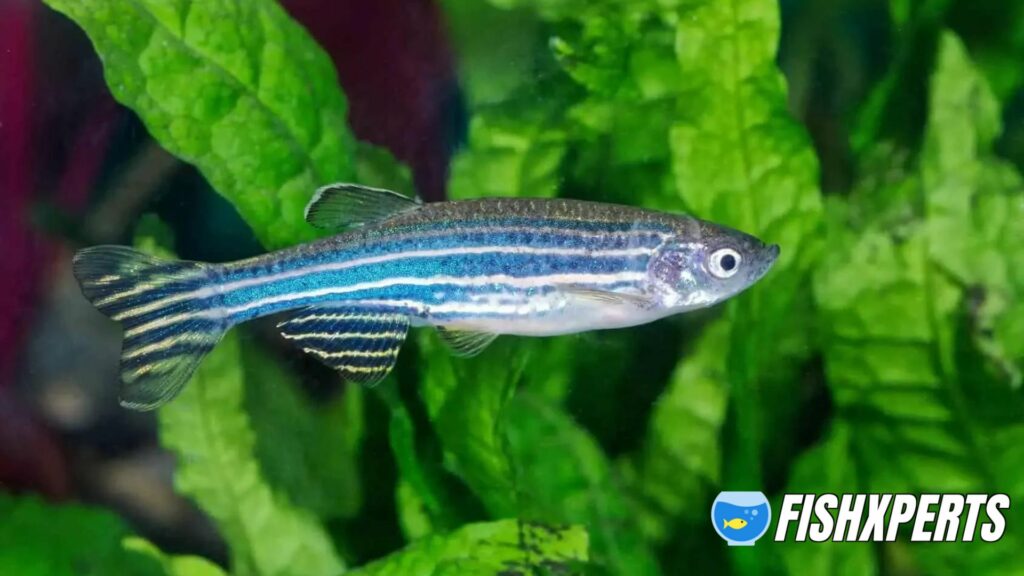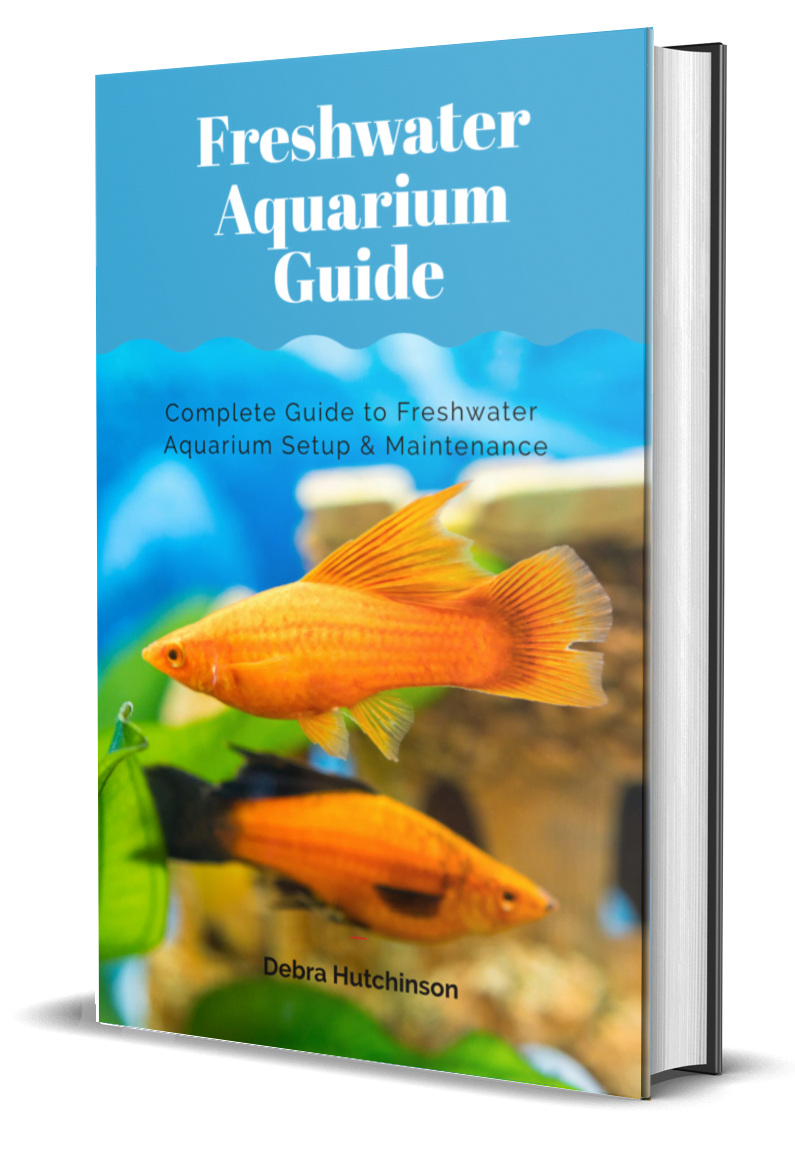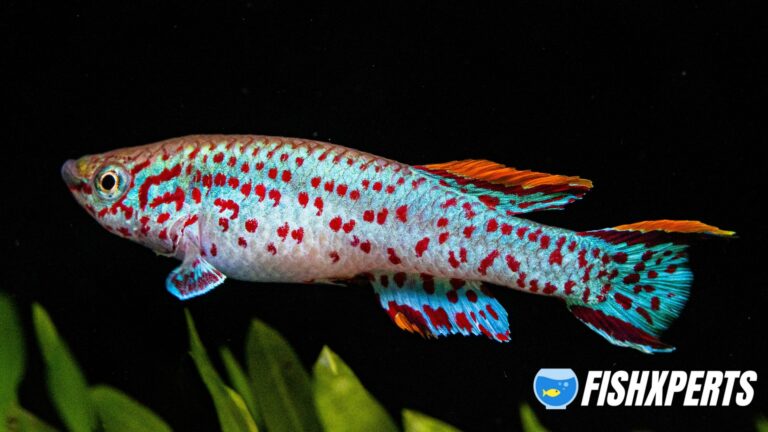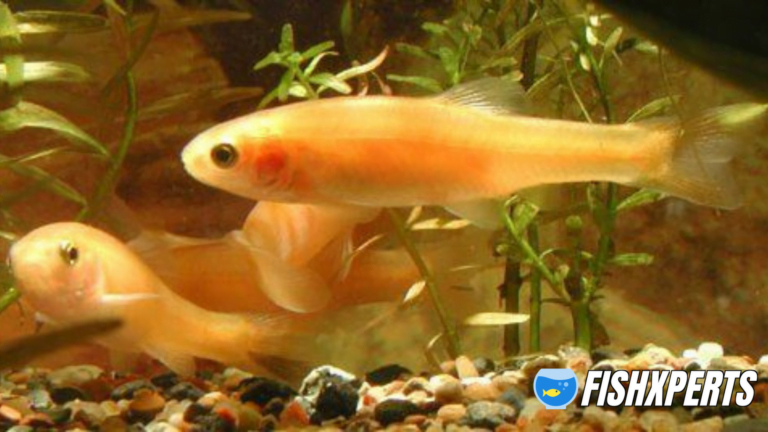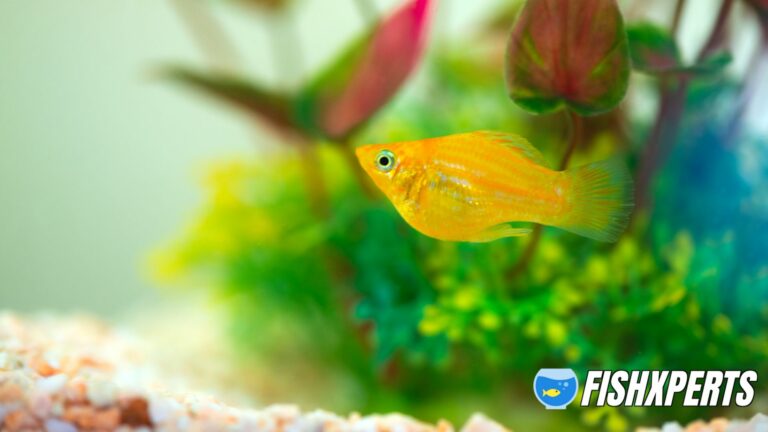Zebra Danio Care
Overview
The zebra danio (Brachydanio rerio) is a small, freshwater fish native to South and Southeast Asia. A member of the minnow family, it is a popular aquarium fish and has been introduced to many parts of the world.
The zebra danio is a hardy fish that can tolerate a wide range of water conditions, making it ideal for beginners. It is a fast swimmer and prefers to live in groups, making it a good community fish. The zebra danio is also known as the zebrafish, striped danio, or tiger danio.
Lifespan
The zebra danio is a long-lived fish, with a lifespan of up to 10 years in captivity. In the wild, however, their lifespan is much shorter, only living for 2-3 years. The zebra danio is a hardy fish that can withstand a wide range of water conditions, making them a perfect choice for beginner aquarists.
Appearance & Behavior
The zebra danio is a small, active fish that is easily recognizable by its striped pattern. This fish is a peaceful community fish that does well in groups. It is a hardy fish that is easy to care for, making it a good choice for beginner aquarium hobbyists.
The zebra danio is a fast swimmer and prefers to live in shoals in the wild. In the aquarium, they will do best in groups of 6 or more fish.
These fish are not known to be fin nippers, but they may harass slower-moving fish. The zebra danio is a omnivore and will eat most aquarium foods, including flakes, pellets, live, and frozen foods.
Colors, Patterns, Fins, and Sex Differences
The zebra danio is a small, brightly colored fish that is popular in the aquarium trade. Zebras are easily distinguished by their horizontal stripes, which can be black, brown, gold, or green.
Some zebras also have vertical stripes or other patterns on their bodies. The fins of the zebra danio are clear or pale, with the exception of the males’ anal fins, which are long and ornate. Females usually have shorter fins than males.
Zebras are sexually dimorphic, meaning that males and females can be told apart by their appearance. Males typically have brighter colors and longer fins than females.
In some cases, the sex of a zebra can be determined by looking at the fish’s belly; males usually have a small, round gonopodium, while females have a larger, oval-shaped vent.
The zebra danio is a hardy fish that can adapt to a wide range of water conditions. They are a peaceful species that is compatible with most other fish. Zebras are omnivorous and will eat a variety of foods, including flakes, pellets, live foods, and vegetables.
Tank Requirements/Setup
A zebra danio needs a minimum of a 10 gallon aquarium with a tight-fitting lid. Zebras are known to be strong jumpers, so a lid is necessary to prevent them from jumping out of the tank.
The tank should be decorated with plenty of hiding places and plants. Live plants are best, but artificial plants can also be used. Be sure to leave plenty of open swimming space for the zebra danio to enjoy.
A filter is necessary to keep the water clean and the zebra danio healthy. A good filtration system will also help to keep the water quality stable.
The water temperature for a zebra danio should be between 68-72 degrees Fahrenheit. A heater may be necessary to maintain this temperature, especially if the tank is located in a cool room.
Zebras are social creatures and do best in groups. A group of at least 6 zebras is ideal.
When setting up a tank for zebra danios, be sure to keep these requirements in mind in order to provide them with the best possible environment.
Water Parameters
The following are the ideal water parameters for keeping zebra danios:
pH: 6.5-7.5
Temperature: 65-75 degrees Fahrenheit
Ammonia: 0
Nitrites: 0
Nitrates: 20-40ppm
Zebra danios are very adaptable fish and can live in a variety of water conditions. However, it is important to maintain optimal water parameters to ensure the health and well-being of your fish.
Potential Diseases To Watch Out For
When it comes to zebra danios, there are a few potential diseases to watch out for. One such disease is known as “hole in the head”, which is caused by a parasite known as Hexamita. This disease is characterised by small, raised bumps on the fish’s head, which can eventually lead to larger holes. If left untreated, Hexamita can be fatal.
Another potential disease to watch out for is “dropsy”, which is characterised by swelling of the abdomen and scales. This disease is caused by a bacterial infection and can be fatal if left untreated.
If you notice any of these symptoms in your zebra danios, it is important to seek veterinary treatment as soon as possible.
Tank Mates
While zebra danios are peaceful fish, they are also active swimmers and do best when kept in a group of at least six. They are often kept in community tanks with other peaceful fish such as neon tetras, guppies, and mollies.
Zebra danios are also known to do well with other zebrafish, such as the Longfin zebrafish, as well as goldfish and koi.
However, because they are active swimmers, they may out-compete slower fish for food. It is best to keep zebra danios with fish that are of similar size and activity level.
Food & Diet
The Zebra Danio is an omnivorous fish, which means that it will eat both plants and animals. In the wild, they eat a variety of small organisms such as insects, crustaceans, and worms. In captivity, they can be fed a variety of foods, including pellets, flakes, live food, and frozen food.
It is important to provide a varied diet to ensure that the Zebra Danio gets all the nutrients it needs. A good diet will help to keep the fish healthy and prevent problems such as malnutrition and obesity.
When feeding Zebra Danios, it is important to remember that they are small fish. This means that they should be given small pellets or flakes that are easy to eat. It is also important to avoid overfeeding, as this can lead to health problems.
Breeding
Breeding Zebra Danios is not difficult and can be done by even beginner aquarists. All you need is a pair of adult Zebra Danios, a breeding tank, and some patience.
Here are the basic steps to breeding Zebra Danios:
1. Choose a healthy pair of Zebra Danios that are around the same size. It’s best to avoid breeding Danios that are related to each other.
2. Set up a breeding tank that is at least 10 gallons in size. The tank should have plenty of hiding places and be well-filtered.
3. Introduce the pair of Zebra Danios to the breeding tank.
4. Once the Zebra Danios have adjusted to their new surroundings, they will start to breed. The female will lay her eggs in a secluded spot, and the male will fertilize them.
5. The eggs will hatch in about 3-5 days. The fry (baby fish) will be very small and delicate, so they will need to be fed small live foods such as baby brine shrimp.
6. The fry will grow quickly and will be ready to be moved to a larger tank in about 6-8 weeks.
Breeding Zebra Danios is a fun and rewarding experience. With a little bit of effort, you can successfully breed these beautiful fish.
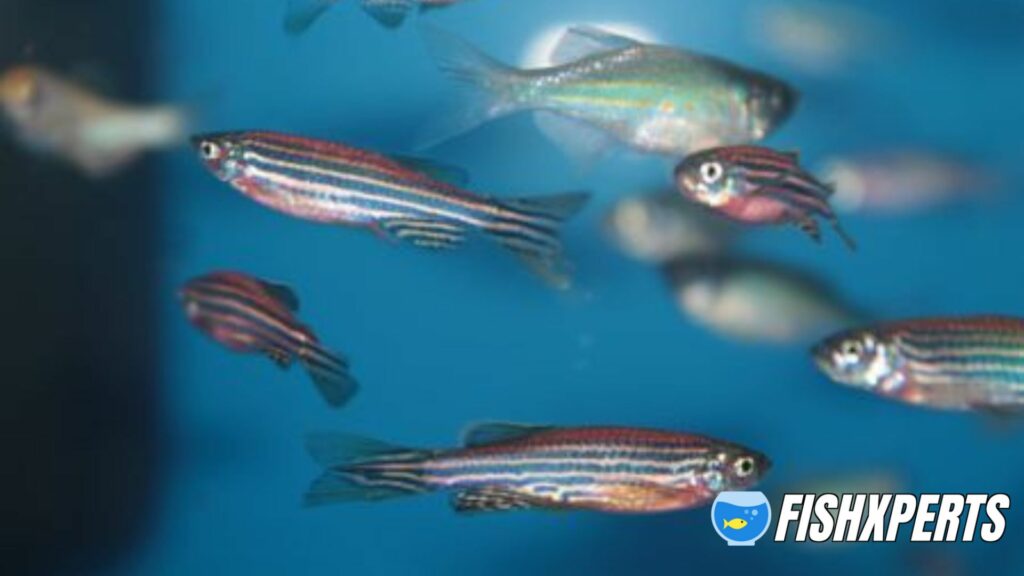
Zebra Danio: Interesting Facts & Stats
- Zebra Danios are a popular freshwater aquarium fish that are easy to care for and make a great addition to any tank.
- They are a hardy fish that can tolerate a wide range of water conditions, making them ideal for beginner aquarium enthusiasts.
- Zebra Danios are a schooling fish, so they should be kept in groups of at least 6-8 fish.
- These active fish are known for their playful personalities and their love of swimming.
- Zebra Danios are omnivorous and will eat a variety of food, including flakes, pellets, freeze-dried foods, and live foods.
- These fish are not known to be aggressive and get along well with other peaceful fish.
- Zebra Danios are native to Southeast Asia and can be found in freshwater streams, rivers, and lakes.
- The average lifespan of a Zebra Danio is 5-7 years, although some have been known to live up to 10 years in captivity.
Raising of larvae:
Zebra Danios are easy to care for and make great community fish. They are peaceful, hardy and can live in a wide range of water conditions. Zebra Danios are also relatively easy to breed in captivity.
The most common way to breed zebra danios is by letting them spawn in a community tank. Zebra Danios are egg-layers and will readily breed in most aquariums. They will lay their eggs on plants or other surfaces in the tank.
Once the eggs are laid, the parents should be removed from the tank to avoid them eating the eggs. The eggs will hatch in about 3-5 days and the larvae will start to grow quickly.
To raise the larvae, you will need to provide them with live food such as baby brine shrimp or microworms. You can also purchase commercial foods that are specifically designed for raising fish larvae.
Once the larvae are big enough to eat regular sized food, they can be added to a community tank. Zebra Danios are easy to care for and make great community fish. They are peaceful, hardy and can live in a wide range of water conditions.
Zebra Danios are also relatively easy to breed in captivity. The most common way to breed zebra danios is by letting them spawn in a community tank. Zebra Danios are egg-layers and will readily breed in most aquariums. They will lay their eggs on plants or other surfaces in the tank.
Once the eggs are laid, the parents should be removed from the tank to avoid them eating the eggs. The eggs will hatch in about 3-5 days and the larvae will start to grow quickly.
To raise the larvae, you will need to provide them with live food such as baby brine shrimp or microworms. You can also purchase commercial foods that are specifically designed for raising fish larvae.
Once the larvae are big enough to eat regular sized food, they can be added to a community tank.
FAQ
What Do Zebra Danios Eat?
Zebra Danios are omnivorous, meaning they will eat both plants and animals. In the wild, their diet consists of small insects, crustaceans, and other invertebrates. In captivity, they can be fed a variety of foods, including pellets, flakes, live and frozen foods.
How Often Should You Feed Zebra Danio?
Ideally, you should feed your zebra danio small meals 2-3 times per day. This will help keep their metabolism going and prevent them from getting obese.
What Do You Call A Baby Zebra Danio?
A baby zebra danio is called a fry.
How many zebra danios should be kept together?
Zebra danios are best kept in schools of at least 6-8 fish. They are very active fish and need to be in a group in order to feel comfortable and secure.
How do you keep zebra danios happy?
Zebra Danios are a hardy and adaptable fish that does well in a variety of aquariums. They are relatively easy to care for and make a great addition to any community tank. To keep your zebra Danios happy and healthy, provide them with a well-filtered aquarium with plenty of hiding places and a varied diet.
Do zebra danios need a bubbler?
Zebra danios are a type of freshwater fish that are known for being hardy and adaptable. They are native to South Asia and can be found in a variety of habitats, from rivers and streams to lakes and ponds. Zebra danios are a popular choice for aquariums and can be kept with a variety of other fish.
While zebra danios are not strictly required to have a bubbler in their tank, many aquarists find that it helps to create a more natural environment for the fish and can also help to oxygenate the water. Bubblers can also be used to create a gentle current in the tank, which can be beneficial for the fish.
Will zebra danios jump out of tank?
No, zebra danios are not known to jump out of tanks. They are a peaceful fish that does well in community tanks.
Is it normal for my zebra danio to have a big belly?
Yes, it is normal for a zebra danio to have a big belly. This is because they are a voracious eater and have a high metabolism. Their stomachs are designed to expand to accommodate their food intake. So, don’t be alarmed if you see your zebra danio with a big belly.
Is it possible to keep zebra danios in a tank without a filter?
It is possible to keep zebra danios in a tank without a filter, but it is not recommended. Zebra danios are a schooling fish and do best in groups of 6 or more.
They are also very active fish and produce a lot of waste. A filter will help to keep the water clean and provide a healthy environment for the fish.
Why do my zebra danios lose weight and colour, and then die?
There are a few potential causes for this issue. One possibility is that the fish are not getting enough food. Make sure that you are feeding them a high-quality diet and that they are getting enough to eat.
Another possibility is that the water quality is not good. Zebra danios are very sensitive to water quality and even small changes can cause them stress. Make sure that you are testing the water regularly and making any necessary changes to keep the water clean and healthy.
If you are still having problems, it is possible that there is something wrong with the fish themselves. Some diseases can cause weight loss and change in colour. If you suspect that this may be the case, you should take the fish to a vet or fish specialist for diagnosis and treatment.
How long will it take for four zebra danios to lay eggs when kept in a two liter jar?
It will take four zebra danios approximately two weeks to lay eggs when kept in a two liter jar. The jar should have a lid with holes punched in it for ventilation, and the water should be changed frequently. The zebra danios will lay their eggs in the plants or decorations in the jar, and the eggs will hatch in about a week.
Final Thoughts
As an aquarist and fishkeeping expert, I believe that zebra danios are a great choice for beginner fishkeepers. They are relatively easy to care for, and they are very active and entertaining to watch. I would recommend that anyone considering keeping fish should give them a try.
Topics Covered

